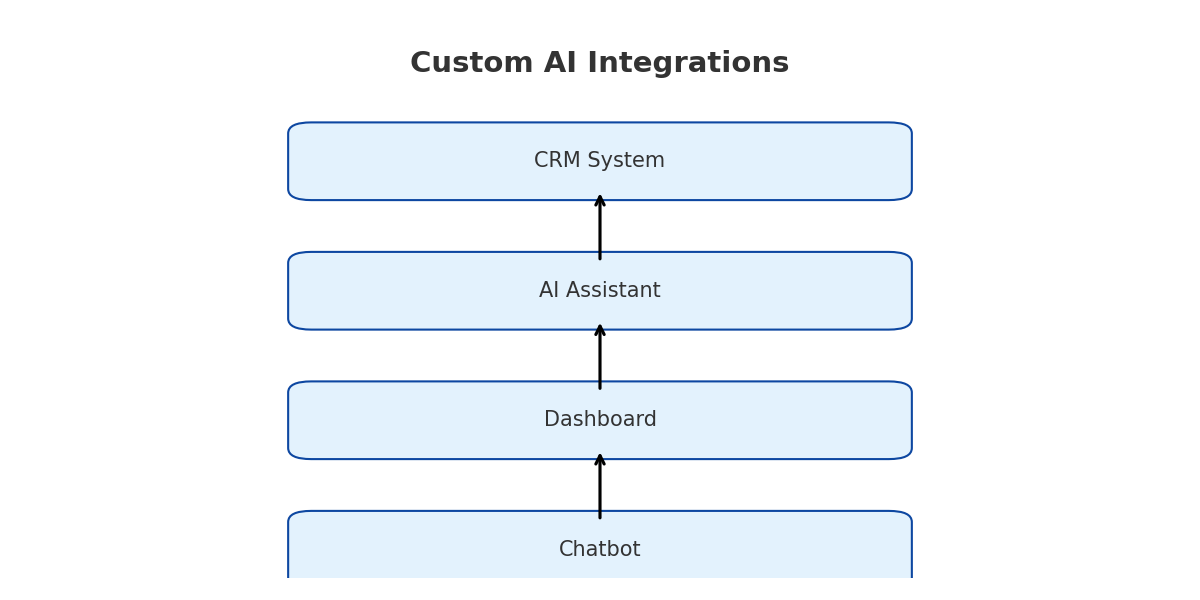Building Tailored Solutions
While off-the-shelf automation tools cover many needs, organizations often require custom AI integrations tailored to their specific workflows. Thanks to no-code and low-code platforms, you don’t need to be a professional developer to build these solutions.
Examples of Custom AI Integrations:
- AI Chatbots: Integrated into websites or CRMs to answer common customer questions and escalate complex ones.
- AI Assistants: Embedded in tools like Salesforce to provide sales insights.
- Document Processing: AI reads contracts or forms, extracts key data, and pushes it into databases.
- Custom Dashboards: Pulling data from multiple APIs and summarizing insights with AI text generation.
Platforms for Custom Integration:
- Bubble + AI plugins: Build full web apps with AI-powered features.
- Retool + LLM APIs: Internal dashboards with conversational interfaces.
- Power Automate + Copilot: Microsoft ecosystem workflows enhanced with AI.
- Zapier Interfaces: AI-driven customer-facing apps without coding.
Benefits of No-Code/Low-Code:
- Rapid prototyping – ideas tested in days, not months
- Reduced costs – fewer developers needed
- Business-user empowerment – domain experts build their own tools
Risks:
- Shadow IT – non-technical staff creating unmonitored apps
- Scalability limits compared to fully coded solutions
- Data privacy issues if tools connect to sensitive data
When managed properly, custom AI integrations empower teams to innovate without waiting for engineering backlogs, enabling faster experimentation and value delivery.
